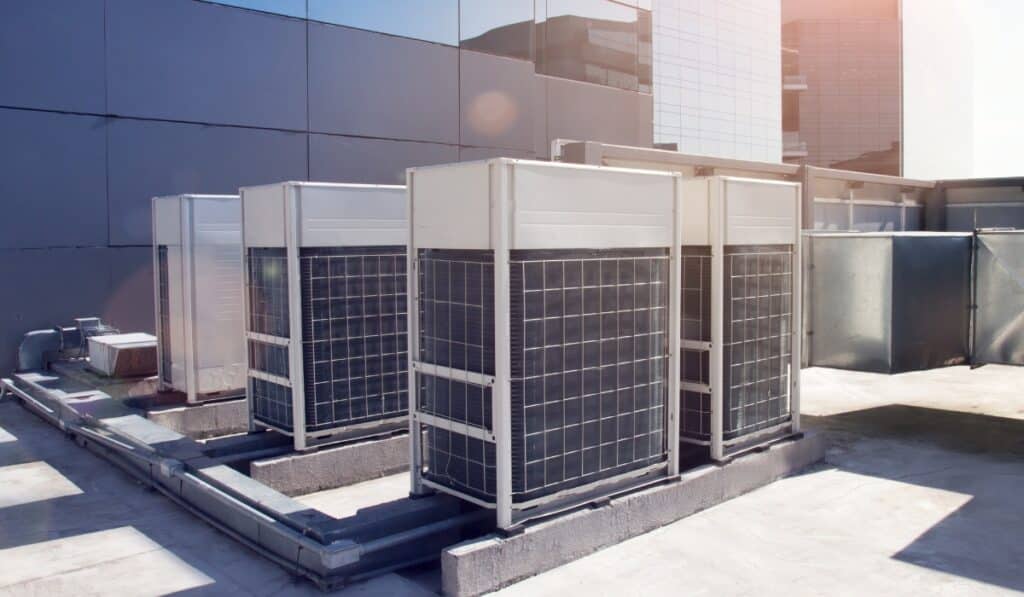Sizing an HVAC (heating, ventilation, and air conditioning) system correctly is a critical step in ensuring indoor comfort, energy efficiency, and longevity of the equipment. An improperly sized system can lead to various issues, such as inadequate heating or cooling, increased energy consumption, and premature equipment failure. Proper HVAC system sizing takes into account several factors, including the size of the living space, insulation levels, window areas, and occupancy patterns.
Factors Influencing HVAC System Sizing
Building Characteristics
- Square footage of the living space
- Number of floors and rooms
- Ceiling height
- Insulation levels (walls, attic, and crawl spaces)
- Window area and orientation
- Shading from trees or neighboring buildings
The building’s characteristics play a significant role in determining the heating and cooling loads. A larger living space or multiple floors will generally require a more powerful HVAC system to maintain comfortable temperatures throughout the entire area.
Climate and Location
- Outdoor temperatures (heating and cooling design temperatures)
- Humidity levels
- Altitude
- Exposure to sunlight and wind
The climate and location of the building are essential factors in HVAC system sizing. Extreme temperatures, high humidity, and altitude can all impact the system’s performance and capacity requirements.
Occupancy and Usage Patterns
- Number of occupants
- Daily schedules and activities
- Appliance and lighting loads
- Ventilation requirements
The number of occupants, their daily routines, and the presence of heat-generating appliances or equipment can influence the overall heating and cooling loads. Proper ventilation is also necessary to maintain indoor air quality and comfort levels.
Calculating HVAC System Sizing
Manual J: Heating and Cooling Load Calculation
The Manual J method, developed by the Air Conditioning Contractors of America (ACCA), is a widely accepted industry standard for calculating the heating and cooling loads of a building. This method takes into account the factors mentioned above, such as building characteristics, climate, and occupancy patterns, to determine the appropriate size of the HVAC system.
The Manual J calculation involves:
- Collecting data about the building and its occupants
- Calculating heat gains and losses through walls, windows, ceilings, and floors
- Accounting for internal heat sources (appliances, lighting, occupants)
- Considering ventilation requirements and outdoor air infiltration
- Determining the design heating and cooling loads
This comprehensive calculation ensures that the HVAC system is sized correctly to meet the specific needs of the building and its occupants.
Manual D: Duct Design and Sizing
Once the heating and cooling loads have been calculated using Manual J, the Manual D method is used to design and size the ductwork system. Proper duct sizing is crucial for efficient air distribution and to avoid issues like noise, drafts, and uneven temperatures throughout the living space.
The Manual D calculation involves:
- Determining the required airflow rates based on the Manual J loads
- Designing the duct layout and routing
- Calculating the appropriate duct sizes and lengths
- Accounting for duct fittings, turns, and transitions
- Ensuring adequate static pressure and air velocity
By following the Manual D guidelines, professionals can ensure that the ductwork system is properly sized and designed to deliver the necessary airflow to each room or zone in the building.
Consequences of Improper HVAC System Sizing

Oversized Systems
An oversized HVAC system can lead to several issues:
- Short cycling (frequent on/off cycles)
- Inability to effectively dehumidify the indoor air
- Increased energy consumption and higher utility bills
- Uneven temperature distribution and discomfort
- Increased wear and tear on the system, leading to premature failure
Undersized Systems
On the other hand, an undersized HVAC system can result in:
- Inability to maintain desired indoor temperatures
- Increased humidity levels and discomfort
- Continuous operation, leading to higher energy costs
- Shortened equipment lifespan due to excessive strain
Energy Efficiency and Cost Savings
A properly sized HVAC system not only ensures optimal comfort but also contributes to energy efficiency and cost savings. Here’s how:
- Reduced energy consumption: A correctly sized system operates more efficiently, minimizing unnecessary energy waste.
- Lower utility bills: Efficient operation translates into lower monthly energy costs for heating and cooling.
- Extended equipment lifespan: Properly sized systems experience less strain, leading to longer service life and fewer repair costs.
- Improved indoor air quality: Correctly sized systems can better regulate humidity levels and ventilation, promoting a healthier indoor environment.
Professional HVAC System Sizing and Installation
While DIY HVAC sizing calculations are possible, it is highly recommended to seek the expertise of professional HVAC contractors or engineers. They have the necessary training, experience, and specialized tools to accurately assess the heating and cooling loads, perform precise calculations, and recommend the appropriate system size and configuration.
Professional HVAC contractors follow industry best practices and adhere to local building codes and regulations. They can also provide valuable guidance on energy-efficient equipment options, proper installation techniques, and ongoing maintenance to ensure the longevity and optimal performance of the HVAC system.
Periodic HVAC System Evaluations and Upgrades
As buildings age and occupancy patterns change, it is essential to periodically reevaluate the HVAC system’s sizing and performance. Factors such as renovations, additions, changes in insulation levels, or shifts in occupancy can impact the heating and cooling loads, potentially rendering the existing HVAC system inadequate.
Regular maintenance and professional assessments can identify potential issues and recommend necessary upgrades or replacements to ensure continued comfort, efficiency, and energy savings.
If you’re located in Los Angeles, CA, and need professional HVAC maintenance, repair, or system sizing and installation services, look no further than TOP AC Inc. Our team of experienced technicians is dedicated to providing top-notch solutions tailored to your specific needs. Contact us today to schedule a consultation and ensure your HVAC system is sized correctly for optimal comfort and energy efficiency.

